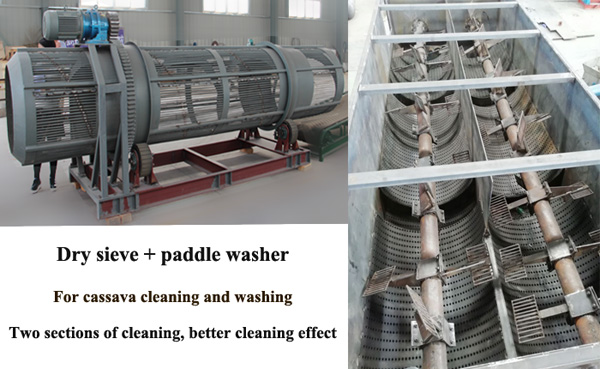Cassava starch production in Vietnam Past conditions and new development opportunity
Release Time:2020-09-15 14:38Author:sd888Source:未知
Any questions about the product can be communicated with us at any time!
New opportunities for cassava starch production in Vietnam
1. Advances in processing technology and equipment
With the development of the cassava processing industry, cassava processing technology at home and abroad has been continuously improved. Vietnam is also actively introducing new equipment and technologies to process tapioca starch.
The traditional methods of tapioca starch processing are improved as follows: washing, washing, crushing, fiber separation, protein separation, degreasing, dehydration and drying. The tapioca starch processing equipment is also more efficient. It takes only half an hour to produce high-quality cassava starch using a modern cassava starch processing machine. In addition, there is an automatic control system that can monitor the starch production process at any time.
Ensure starch quality.
2. Increased domestic and foreign market demand
The advancement of technology not only makes the quality of tapioca starch produced higher, but also brings more uses for tapioca starch.
In Vietnam, cassava is the third most important crop after rice and coffee. In the past few decades, the progress of tapioca starch processing technology has led to the rapid development of Vietnam's tapioca starch production industry. Vietnam's modern mechanized cassava starch production has gradually replaced the traditional small-scale manual production. With the increasing demand for starch in the food and non-food industries, this
The production of potato starch has brought new development opportunities. Below we will introduce in detail the past conditions and new development opportunities of cassava starch production in Vietnam.
Past status of cassava starch production in Vietnam
2. Backward processing technology
The traditional production of cassava starch in Vietnam mainly involves manual production, using only a small amount of equipment. Traditional tapioca starch processing usually includes washing, peeling, grinding, extracting starch in a sedimentation tank, drying and screening. After washing and grinding the cassava, it is filtered and placed in a precipitation tank to extract starch, and then the precipitated starch is further dried and purified to obtain dry starch.
There are two drying methods: daylight drying and mechanical drying. Most small farmers or small starch factories usually obtain dry starch through sunlight drying, but starch is easily contaminated during the drying process. Therefore, the starch produced is of low quality and is usually used to produce low-quality noodles.
Mechanical drying can produce high-quality cassava starch, and the produced starch can be used not only in food, but also in value-added products such as textiles, paper and MSG. However, considering the funding requirements for drying starch, only a few large manufacturers use mechanical drying.
3. The starch produced is mainly used in the domestic market and rarely exported
Due to the low quality of starch produced, most of the tapioca starch produced in Vietnam is used for household consumption and food, and is rarely used for export. About 40,000-45,000 tons of tapioca starch are used for household consumption each year. It is used to make various cakes and biscuits, deep-fried meat and fish, and soups made from traditional Vietnamese food.
In recent years, due to economic development, the situation of the tapioca starch market has changed. In the Asian and global starch markets, tapioca starch has become the first choice for many food and non-food applications due to its excellent functional properties. The development of Vietnam's production also ushered in new development opportunities.
1. The proportion of tapioca starch processing is small
In 1988, the output of cassava starch in Vietnam only accounted for about 10% of the output of cassava, mainly used to produce local noodles and maltose.
In 1992, the total demand for tapioca starch production (wet starch and dry starch) in Vietnam was about 40,000 tons. In addition to being used for household consumption and food processing, these tapioca starches are also widely used for export and various industrial uses, such as textiles, medicines, cardboard, MSG, glucose, maltose, plywood, etc.
So far, Vietnam’s cassava starch production has only accounted for a small portion. Most cassava is directly exported to China, Thailand and other countries. A small amount is used to produce starch, cassava chips, animal feed, medicines, biofuels, industrial alcohol, etc.
In the food industry, in addition to noodles, biscuits and cakes, tapioca starch can also be used as a raw material for maltose production and candy production in northern Vietnam.
In the non-food industry, tapioca starch can be used in the sizing of various cotton fabrics in the textile industry and the production of glue for cardboard and other packaging materials.


